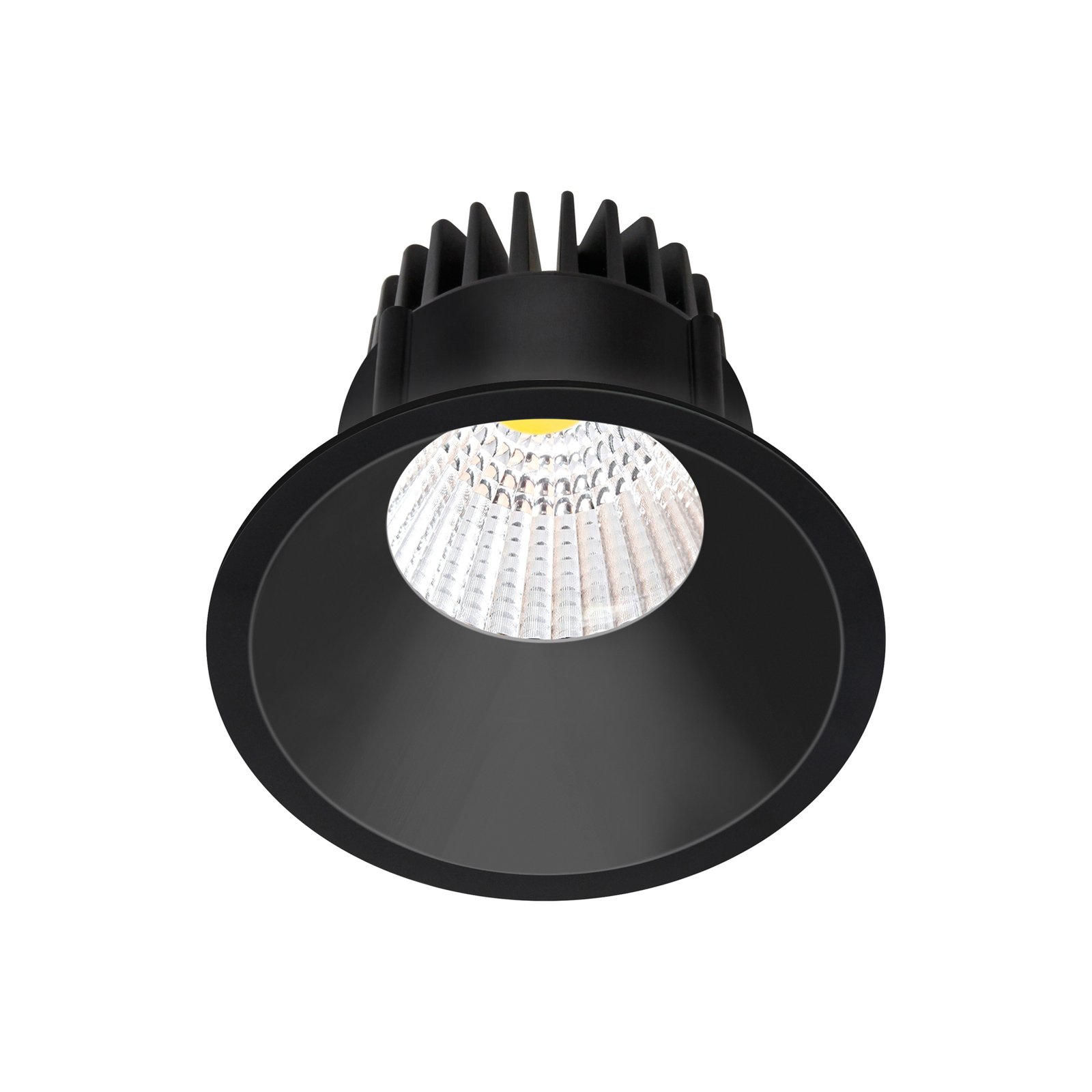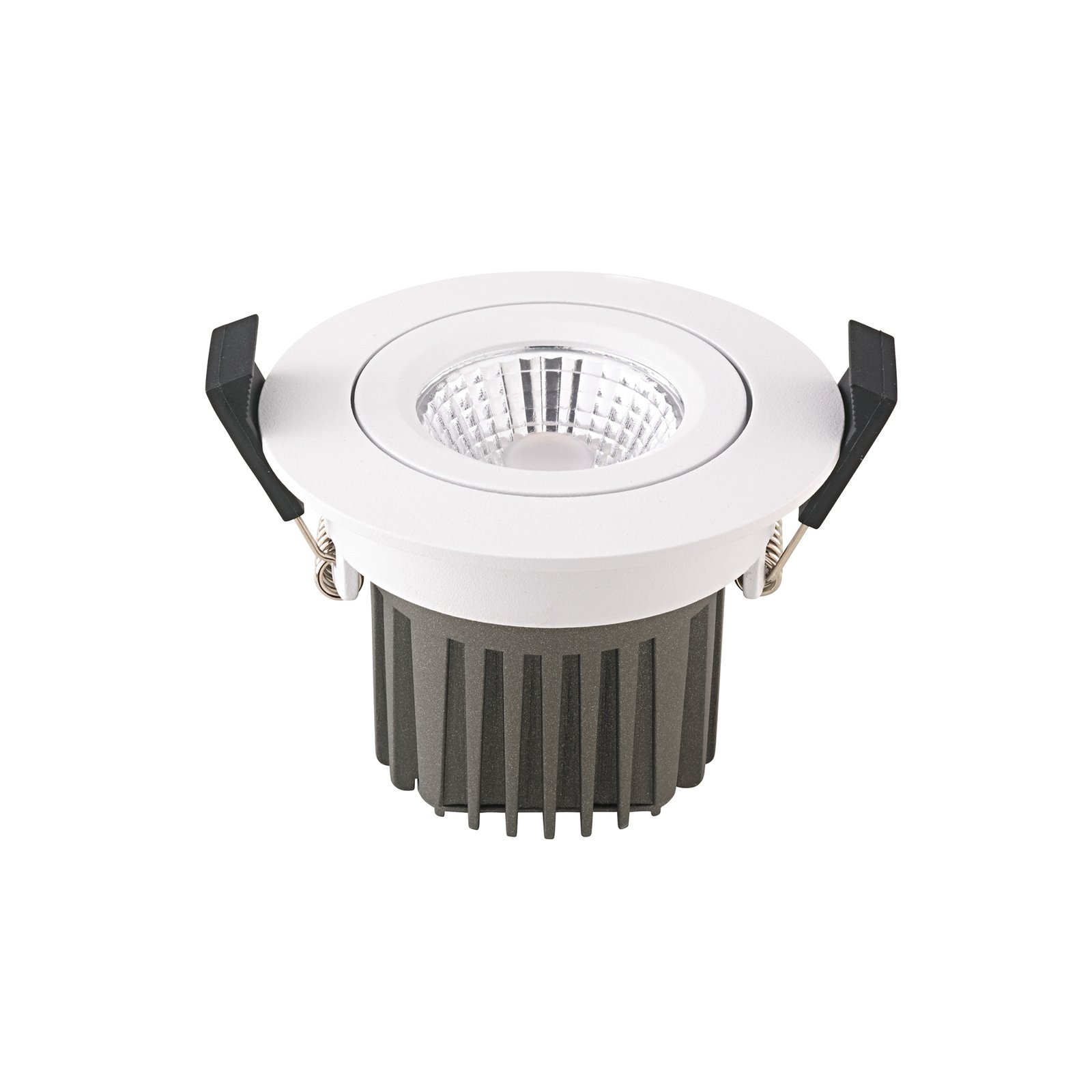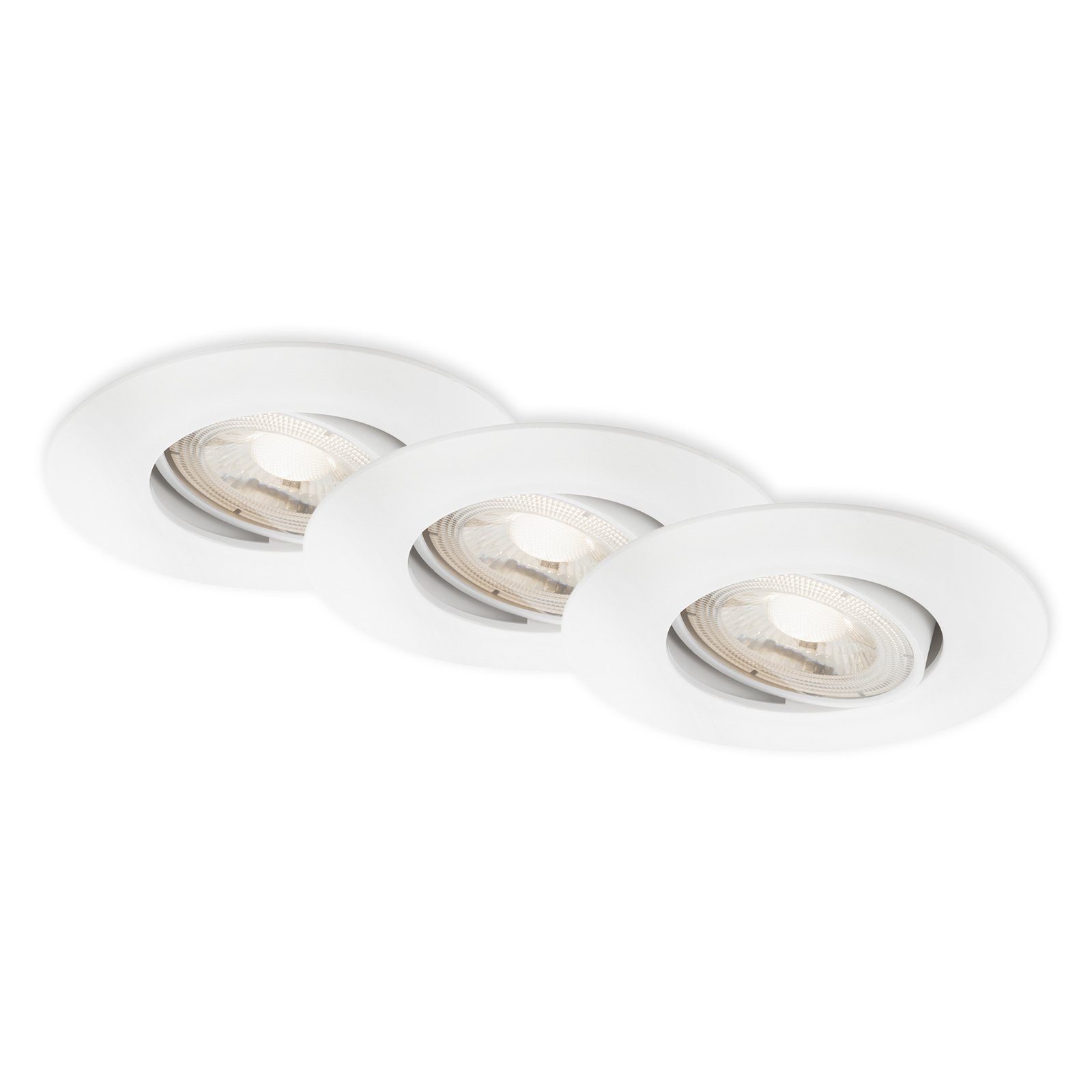- 50 days free returns
- Rated “Great” on Trustpilot
- The UK's largest selection of brands
High-voltage recessed spotlights
Complete room lighting or flexible lighting accents
Where are high-voltage recessed spotlights used?
There are numerous possible applications for high-voltage recessed luminaires, also known as HV recessed spotlights. They prove their worth as spotlights for illuminating shelves as well as for the complete lighting of a living room. Retrofitted swivelling spotlights make it easy to illuminate every corner of the room.
The great advantage of recessed spotlights is their compact design: After installation, the entire technology disappears into the furniture, ceiling or wall, leaving only the decorative ring visible. This makes small rooms appear larger**, as no large-format luminaires protrude into the room. This also makes high-voltage recessed spotlights interesting for corridors, for example.
How are high-voltage recessed spotlights installed?
A note in advance: Only an electrician should carry out the electrical installation to ensure that all safety requirements are met.
After the electrical installation, a hole is drilled in a suspended ceiling. The dimensions for the hole are specified by the respective product. To install the high-voltage recessed spotlight, the holding clips on the back are usually pressed together and the spot is inserted into the drilled hole.
How deep must the cavity be for recessed spotlights?
That depends on the product. There are high-voltage recessed lights with small installation depth, for which a cavity of 30 mm, for example, is sufficient.
You should also opt for such recessed luminaires if you do not want the suspended ceiling to make the room unnecessarily lower. This is because a suspended ceiling always means making the room slightly smaller.
Which light source do recessed HV spotlights use?
As a rule, high-voltage recessed spotlights use a GU10 reflector lamp with halogen technology. However, today there are also recessed lights with fixed LEDs and suitable LED retrofits for classic GU10 sockets.
An important note when switching from GU10 halogen to GU10 LED: The new light source should have a comparable brightness (in lumen), a similar colour temperature (in kelvin), good colour rendering (from Ra 80) and a comparable beam angle, for example 40° for a defined cone of light or 110° for wide-area lighting.
What is the difference between high-voltage recessed spotlights and low-voltage versions?
High-voltage recessed spotlights do not require a transformer. As with all recessed luminaires, the individual spots are connected to each other, i.e. there is a cable from one luminaire to the next. With 230-volt lights (high-voltage), there is no limit to how many spots can be connected in series.
The decision as to whether to choose high-voltage or low-voltage is often also determined by the location. In bathrooms, especially in the inner two protected areas, for example, only 12-volt systems (low voltage) may be operated.
What needs to be considered when installing in bathrooms?
When installing in the bathroom, electricity meets moisture, which is why the advice to only have the installation carried out by an electrician should be taken all the more seriously, as there may be a danger to life.
When installing in the bathroom, it depends on the protected area in which the light is to be installed:
- In the bathtub and shower area, lights must have IP67 and may only be operated with 12 volts
- Lights up to a height of 2.25 m around the shower head and bath must be IP65 rated and 12-volt powered
- Up to 60 cm around the bath or shower and up to a height of 2.25 m, lights only need to have IP44 protection
Tip: Would you like more flexibility with your recessed spotlights? Also discover smart recessed spotlights from Philips Hue.
Do you need expert advice on the selection, installation or mounting of high-voltage recessed spotlights? Or do you have another question about light and lighting? If so, our specialist advice team will be happy to help you: to contact form .
The strike-through prices correspond to the manufacturer's RRP.
All prices include 20% VAT, delivery costs excluded.











































































































































